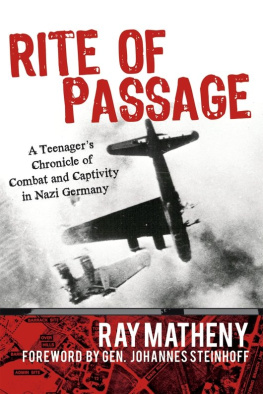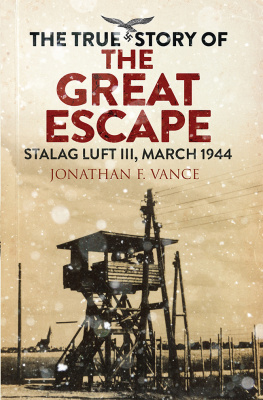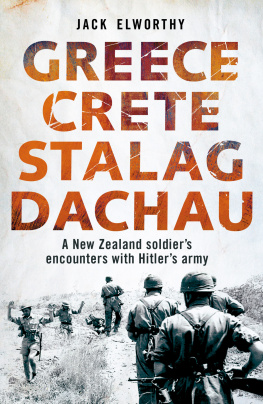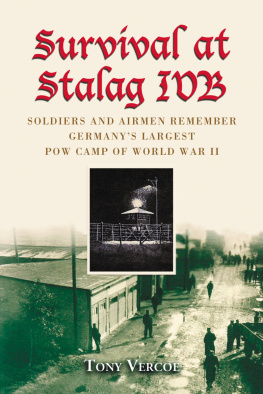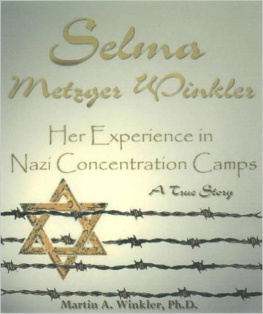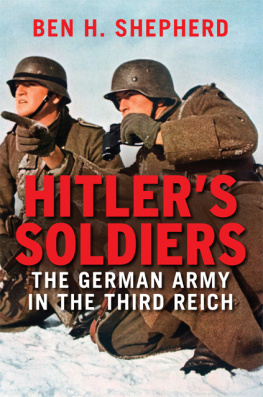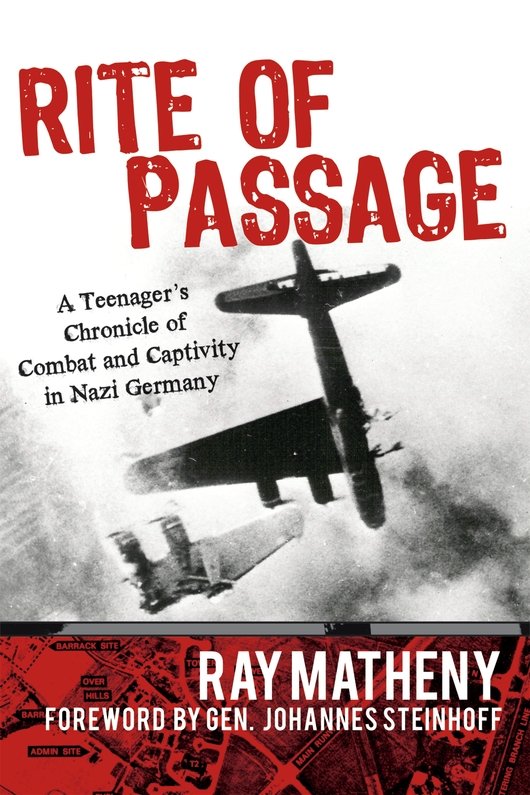ACKNOWLEDGEMENTS
I sincerely thank my family and friends for enduring my overriding interest in aviation and my repeated telling of many of my World War-II adventures. It seems that the years 1942-1945 constituted the defining period that shaped my thoughts and actions for nearly every turn of my life since. I owe a debt of gratitude to my late mother who saved all of my letters, photographs, newspaper articles and military documents that I had sent home during the war which proved indispensable to the writing of this book. I am especially grateful for my wife, Deanne, who has encouraged me to keep the memory of the war years alive not only our family but for those who might read this book. Deanne has patiently read my manuscript and made suggestions to smooth out my rough hand.
Special thanks are due to Ray Hillam, professor of Political Science, and Alan Keele, professor of German, Brigham Young University, for introducing me to Walter Kempowski who included my story in the World War II Kemposwki-Archive. Also, I appreciate Alan Keeles translation of General Johannes Steinhoffs forward for this book. I thank Don Norton for his encouragement and for taking and editing my oral history of the war that is deposited at Brigham Young University. I integrated some of my oral history recollections into this volume with the manuscript that I wrote many years ago.
I am grateful to Jim Baer who read and made helpful suggestions to improve the manuscript. Also, thanks are due to other friends who have consistently encouraged me to see my book published in English. I am especially indebted to Ed D. McKenzie for information on Stalag 17-B that was unavailable to me even though we were in the same camp at the same time. A special note of appreciation goes to the late Bob Lamoureaux, tail gunner of the Deacons Sinners, who shared his memories with me for this book.
Also I appreciate the information about our trek from Stalag 17-B to Braunau, Bavaria, recorded by Elmer N. Horey and William W. Kiser, who kindly made copies of their POW logs for me. They carefully noted the kilometers travelled, shelters we used, or the lack thereof, food supplied by the Germans, and other interesting details. Thanks are due to Ellis G. Gibson (Gib) of Travel Designs who in 1995, took a group of ex-Kriegies to the location of Stalag 17-B and to other locations involved in our march to Braunau, Bavaria. Many thanks go to Al Christy who thoughtfully critiquedthe manuscript and offered helpful suggestion on how to present my story. I thank Charles Edinger for writing his interesting book on his time in Stalag 17-B that gave me his insight on the camp.
Many thanks go to those who actually saw the Deacons Sinners being hit or go down, or who have records about the combat scene over Kiel, January 5, 1944 and have provided me with that information. They include Steve Evanuska, Edward J. Ludwing, Robert F. Brown, Mervyn J. Wilson, Mike Hart, Wayne Ottley, and Tommy J. Bryant
I am grateful to Albrecht Knaus Verlag GmbH for granting me publishing rights to my original manuscript which was published under the German title Die Feurreiter in 1988. Last, but not least, thanks are due to Gary Toyn who put my manuscript into a more readable and publishable form, and for publishing my manuscript at American Legacy Media. I am indebted to the unknown manufacturer of my parachute, and to those who faithfully packed and otherwise maintained it, as it saved my life.
The account of my wartime imprisonment is based on my memory supplemented by information from a few published personal memoirs of other former POWs of Stalag 17-B, U.S. Military Intelligence Service reports, American Former POWs, Stalag 17-B Newsletters, and personal experiences recorded in Log Books that some prisoners had managed to bring home. The accounts of other former POWs most often reflect personal experiences that focus on particular events each author was involved in or had heard about via the rumor mill of the camp.
As far as I am aware, the only published attempt to create an historical account of Stalag 17-B that involves inmates stories is Barbara Stelzl-Marxs book Zwischen Fiktion und Zeitzeugenschaft . Her title may be loosely translated as: Between Fiction and Testimony Time, meaning, I suppose, that written accounts and oral histories of the camp given long after the events occurred are altered by time. It is from this point of view that I tell of my own experiences in the camp. There are many things I was told by others after I arrived at the camp and some can only be considered as rumors. The camp itself was a giant rumor mill where thousands of men were kept cocooned away from their normal pursuits. They spent much of their time talking about anything and everything that struck a spark of interest. I have also told about events and circumstances I saw and heard myself, trying my best to render them as they occurred. Undoubtedly, however, the remembrance of those things has been tempered by time, at least to some extent. Ultimately the responsibility for what is in this book rests with me, including any events or circumstances that may not have been correctly remembered despite my research and discussions with others.
EPILOGUE
I t has been a long time now, over sixty years, since I returned from the war in Europe. I experienced only a small part of that huge conflict and had only a certain level of understanding about it. When I returned home, I brought with me a number of unanswered questions. They are the mysteries of my life from the war years, things I wanted to resolve. Over time I have found answers to some of those questions, and the following describes some of the answers that are most important to me.
When the Deacons Sinners made her final flight over Germany, Bob Lamoureaux was still hospitalized in Kimbolton after being grievously wounded on our unsuccessful mission to bomb the ship Orsono . Of course, not long after that mission I began my sixteen month sojourn as a prisoner of war, and I assumed that Bob had likely died from his wounds.
My mother had received a letter that Lamoureaux ended up in a hospital in the U. S. after the war, but I was unable to make contact with him. Now, fast-forward to 1995 when I was invited to give a presentation at Brevard College in Florida about my work as an archaeologist in Guatemala. The friend who invited me to speak, who is also an archaeologist, knew about my wartime experiences. He had a local reporter call me to get information to advertise the talk about Guatemala, and he asked me to say something about my involvement in WWII. The resulting article in the local paper included the name of my B-17, the Deacons Sinners . Soon I received a most amazing communication from a woman named Iris, the sister of Lt. Doty, our navigator and one of the crew members who perished when we were shot down. She recognized the name of the airplane and contacted me, proposing that we meet when I came to Florida. I had the opportunity to meet Iris and her husband. She had been very young when her brother died and she knew little about the circumstances. Although what I told her about how the crew members died was not an easy matter, I was able to assure her that her brother was well-liked and that, despite illness, he carried out his duties in an honorable way.
Some time after this meeting I received a message from Iris that she had learned that Bob Lamoureaux was still alive, and she gave me hiscontact information. Soon Bob and I were in contact for the first time in fifty years! He had assumed that I had died with the rest of the crew. Our first phone conversation was very emotional as we talked about ourselves and our fallen comrades. Bob lived in Miami, Florida, and I had recently been asked to speak (about archaeology again) at the Miami Museum of Science. When I went to Florida our reunion lasted several wonderful days, and we caught up on fifty years. I recognized Bob instantly; he was simply an older version of the handsome young man I had known years earlier.

